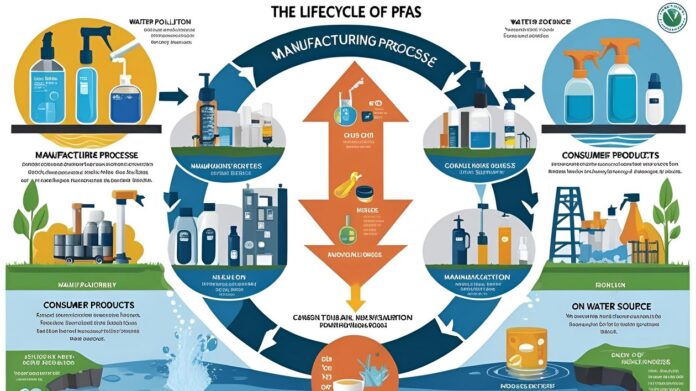What makes one person’s settlement from a PFAS lawsuit higher than another’s? It’s a question that doesn’t always have a simple answer, especially when emotions are high and health is on the line.
PFAS chemicals, sometimes called “forever chemicals,” have made headlines due to their serious health risks and long-term presence in the environment. For people exposed to PFAS through drinking water, firefighting foam, or contaminated soil, the damage has been physical, emotional, and financial. So, when compensation is being considered, understanding how it’s calculated matters.
Let’s look at what actually affects how much someone might receive in a PFAS settlement, and why two similar cases might still lead to very different outcomes.
It Starts With Exposure
One of the biggest factors in any PFAS settlement is exposure. This isn’t just about whether someone came into contact with PFAS, but how, where, and for how long.
Some key details:
Type of exposure – Drinking contaminated water daily over many years carries more weight than brief workplace contact.
Duration – The longer someone was exposed, the more potential for harm. Long-term exposure almost always results in stronger claims.
Source of exposure – Residential exposure, occupational exposure, or military-related exposure are each assessed differently.
Proof is essential here. Medical records, environmental testing, employment history, and even home location can all play a role in establishing the extent of exposure.
Health Effects Matter
Health conditions directly linked to PFAS exposure are another major factor. Not all illnesses are treated equally in the legal process. Some have been clearly associated with PFAS through scientific studies, while others are still being researched.
Diseases that have stronger links to PFAS include:
- Kidney cancer
- Testicular cancer
- Ulcerative colitis
- Thyroid disease
- High cholesterol
- Preeclampsia or pregnancy-induced hypertension
Having a diagnosis that falls within this group typically increases the likelihood of a higher settlement. Medical evidence must support any claim, including test results, physician notes, and treatment records. The severity and progression of the condition will also be considered.
This is where the legal side begins to connect with the medical side. The more documentation available, the easier it is to build a stronger case.
Legal Documentation and Filing Details
A strong claim needs to be built on solid legal groundwork. It’s not just about suffering from PFAS exposure. Timing, location, and the legal strategy used to file the claim can all influence the outcome.
When the claim was filed
Earlier filings often have more leverage, especially in large class action lawsuits.
Whether it’s individual or part of a group
Some people join mass torts or class action lawsuits, while others pursue individual claims. This affects how much direct negotiation happens and the size of any payout.
Jurisdiction
Where the case is filed plays a surprisingly big role. Some states have legal environments that are more favorable to plaintiffs than others.
This legal positioning can sometimes lead to wide differences in settlement amounts, even between people with similar exposure and health outcomes.
Economic Damages Count Too
Personal health isn’t the only loss considered. Economic losses are also reviewed when calculating compensation.
These may include:
- Medical bills – Both past and ongoing expenses are considered.
- Lost wages – If someone had to reduce hours or stop working due to illness linked to PFAS, it can influence the claim.
- Future earning potential – A chronic illness that limits career options or forces early retirement may lead to a higher payout.
These kinds of damages are easier to quantify with documents like tax records, pay stubs, and insurance claims.
In some cases, additional damages for pain and suffering or loss of quality of life may be factored in, though these are harder to calculate and often vary widely by case.
How PFAS Settlements Are Distributed
When large settlements are reached, they usually get divided among many claimants. That division doesn’t always happen evenly. Individual factors heavily influence the final amount each person receives.
This is where some might ask how much money per person in PFAS lawsuit cases actually gets awarded? The answer is, it depends. Some people may receive a few thousand dollars, while others could receive much more based on medical costs, severity of exposure, and legal strategy.
The most important thing to understand is that settlements are not awarded on a flat rate per person. Every case is reviewed on its own merits. Even in class actions, there’s a system for ranking claims and assigning compensation accordingly.
When Minors or Families Are Involved
Things can get more complex when children or families are affected. For example, if a parent was exposed but the child developed a condition believed to be linked, there may be multiple layers to the claim.
In these situations:
- Minors may receive separate settlements placed in trust until they reach adulthood.
- Parents can seek damages related to emotional distress or caregiving burdens.
- Claims might involve both health-related and future risk considerations.
This adds another layer to the settlement process and often leads to more detailed review.
Not Everyone Qualifies
It’s also important to understand that not every claim gets approved. There are strict criteria for what counts as eligible exposure or a qualified health condition. Some claims are denied due to lack of documentation or unclear health links. Others fall outside the statute of limitations.
A claim without strong evidence, or one filed too late, may receive a very low payout or none at all.
Worth Knowing Before You Decide
PFAS cases are emotional, and the legal process can be slow and frustrating. But understanding how these settlements work gives you a better sense of what to expect. There’s no guaranteed payout, and no perfect formula to calculate a settlement, but the main elements, i.e. exposure, health, documentation, and economic loss, are consistent across nearly all claims.
What Happens Next Depends on You
If you or someone in your family has been affected by PFAS, the next step depends on how well your case can be backed with facts. Documentation, timelines, and expert input all matter. So does persistence.
No one can promise a specific number, but understanding the process makes it easier to navigate. Keep your records close, understand your rights, and be realistic about what influences a claim. The difference between a minimal payout and a fair settlement often comes down to preparation.






